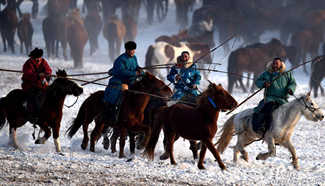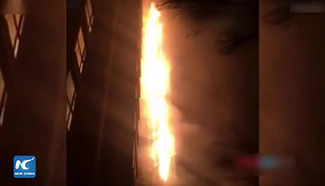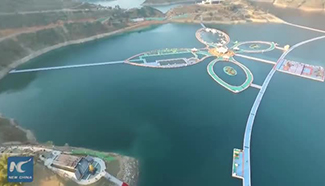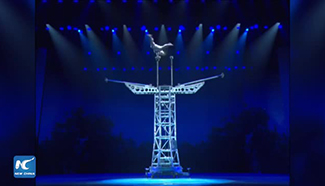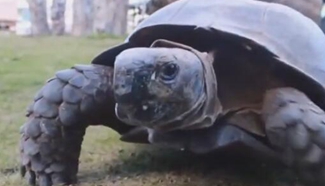SAN FRANCISCO, Jan. 6 (Xinhua) -- A team of researchers has found microscopic structures within a brain region change from childhood into adulthood over a timescale that mirrors improvements in people's ability to recognize faces.
The work, published in the Friday issue of the journal Science, overturns a central thought in neuroscience, which is that as people are born with brains riddled with excess neural connections, the amount of brain tissue goes in one direction throughout our lives - from too much to just enough.
By looking at the brains of an often-overlooked participant pool, namely children, the team led by Kalanit Grill-Spector, a professor of psychology at Stanford University in Northern California and senior author of the Science paper, examined a region of the brain that distinguishes faces from other objects.
"I would say it's only in the last 10 years that psychologists started looking at children's brains," Grill-Spector explained. "The issue is, kids are not miniature adults and their brains show that. Our lab studies children because there's still a lot of very basic knowledge to be learned about the developing brain in that age range."
The team scanned 22 children aged 5 to 12 and 25 adults aged 22 to 28 using two types of magnetic resonance imaging (MRI), one that indirectly measures brain activity, which is known as functional MRI, and one that measures the proportion of tissue to water in the brain, which is known as quantitative MRI and has been used to show changes in the fatty insulation surrounding the long neuronal wires connecting brain regions over a person's lifetime.
And they studied regions of the brain that recognize faces and places, respectively. In adults, these parts of the brain are close neighbors, but with some visible structural differences. "If you could walk across an adult brain and you were to look down at the cells, it would be like walking through different neighborhoods," said Jesse Gomez, graduate student in the Grill-Spector lab and lead author of the Science paper. "The cells look different. They're organized differently."
What they found is that, in addition to seeing a difference in brain activity in these two regions, the quantitative MRI showed that a certain tissue in the face region grows with development. Ultimately, this development contributes to the tissue differences between face and place regions in adults. What's more, tissue properties were linked with functional changes in both brain activity and face recognition ability. And there is no indication yet of which change causes the other or if they happen in tandem.
"We actually saw that tissue is proliferating," said Gomez. "Many people assume a pessimistic view of brain tissue: that tissue is lost slowly as you get older. We saw the opposite - that whatever is left after pruning in infancy can be used to grow."
As the fusiform gyrus, an anatomical structure in the brain that contains face-processing regions, is only found in humans and great apes, namely gorillas, chimps, bonobos and orangutans, the study is the first to use quantitative MRI to directly assess changes in these regions.
"If you had told me five or 10 years ago that we'd be able to actually measure tissue growth in vivo, I wouldn't have believed it," Grill-Spector was quoted as saying in a news release from Stanford. "It shows there are actual changes to the tissue that are happening throughout your development. I think this is fantastic."





